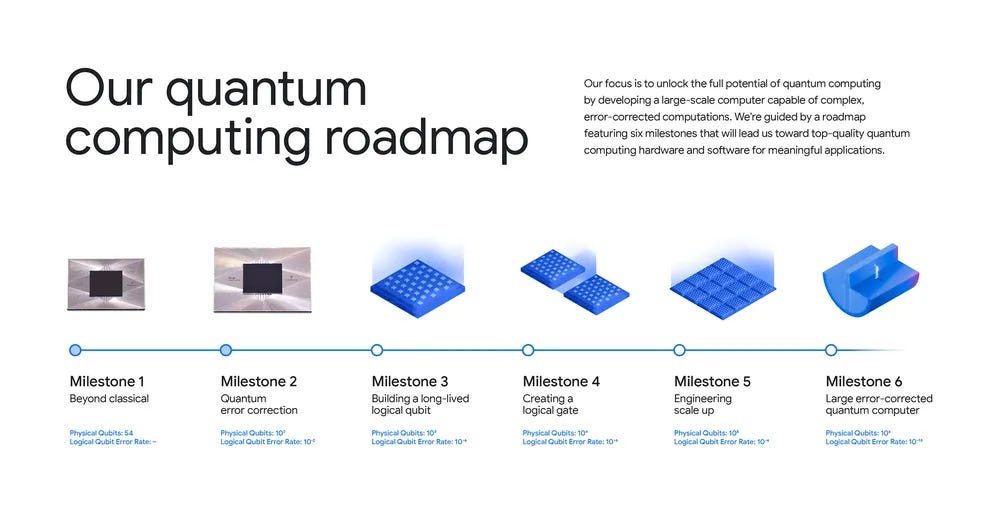Google has made headlines with its new Willow QPU (Quantum Processing Unit) or quantum computing chip. The chip with 105 Qubits can perform some calculations that a classical computer cannot do. There is a debate about the utility of the compilation. Nevertheless, there is also a philosophical interest in how the device actually works. Enter the Multiverse, the bizarre case of the parallel universe. What is the connection between quantum computing and the multiverse?
The blistering performance of quantum computing for some tasks has been touted as likely to bring a new era. This quantum era could accelerate a range of disciplines and areas. It may feed into the ever-growing rapid developments of fields such as AI and Machine Learning.
The exceptional performance of the Willow chip has reignited discussions about the multiverse interpretation of quantum mechanics. Hartmut Neven is the founder and lead of Google’s Quantum AI team. He suggested that such computational capabilities might align with the multiverse theory. This theory posits the existence of multiple parallel universes.
Here, we’ll explore some implications around quantum computing and the multiverse. Many science fiction fans consider it a very interesting concept. It has generated numerous plot lines for films. Examples include Doctor Strange in the Multiverse of Madness, Avengers: Endgame, and the Flash.
Google Willow Chip
The Google Willow chip launched in 2024 by the Google Team. It is a cutting-edge quantum computing processor developed by Google Quantum AI. With 105 qubits, it signifies a jump forward in scalability. It enhances computational power. This builds on Google’s previous breakthroughs.
One of the chip’s most notable features is its modular design, which allows for greater qubit integration and connectivity. This modular approach is essential for scaling quantum systems. It moves us towards fault-tolerant quantum computers. These computers can solve real-world problems like molecular simulations, improvement challenges, and cryptographic analysis.
A significant advancement with Willow lies in its improved error correction capabilities. Quantum computers are inherently prone to errors due to qubit decoherence. Environmental noise also contributes to these errors. Nonetheless, Willow employs advanced algorithms. These algorithms reduce error rates exponentially as the system scales.
This makes it a critical step toward building robust quantum computers that can perform reliable and accurate computations. Google has demonstrated that the Willow chip can perform specific tasks in under five minutes. These tasks would take classical supercomputers over 10 septillion years. This reinforces its position at the forefront of quantum supremacy.
The Multiverse and Parallel Worlds
The stuff of science fiction, or is it? Bizarrely enough, the multiverse is quite widespread among scientists. This is due to its seemingly strange effects of parallel universes. The acceptance exists for a simple reason. Its gets away from the process of waveform collapse, which has never sat well with many scientists. Many scientists, and physicists will contend that invoking waveform collapse to obtain a classical result is plain wrong.
Some scientists argue that MWI is a mainstream view. Go to any academic conference and you’ll find support for this when interpreting quantum calculations. MWI or Multi Worlds Interpretation suggests that new quantum possibilities create new branches. Each branch corresponds to another universe with an alternate reality. We measure an outcome in our universe, but another universe or a parallel universe exists with another reality. So, quantum mechanics’ complex, often hard-to-probability interpretation becomes rather deterministic.
The Many-Worlds Interpretation (MWI) of quantum mechanics is a conceptual framework. It proposes that every quantum event results in the branching of the universe into multiple, equally real versions. Introduced by physicist Hugh Everett III in 1957, MWI challenges the traditional Copenhagen interpretation. This conventional view suggests that a quantum system remains in a superposition of states until observed. At that point, it “collapses” into a single outcome. Instead, MWI eliminates the need for collapse. It asserts that all possible outcomes occur. Each outcome exists in its own separate, non-communicating branch of reality.
Quantum Computation
Is quantum computing a way of getting something for nothing? In our classical view of the world, we see work being done. For example, heat is turned into useful motion. This process is often not very effective, with plenty of waste energy. But what is happening on a more fundamental level with quantum computing? How can there be calculations that classical machines cannot perform? Yet, they can be seemingly computed with a quantum QPU (Quantum Processing Unit)?

We are used to principles of energy conservation. Our computers consume energy and turn that energy into switching binary digits or bits from one state to another. It’s very well understood. Over the last century, we have transitioned from mechanical to solid-state devices. We take it for granted that every year we’ll get more grunt for the same financial outlay (Moore’s Law). So, computations take time, and they need energy. Some problems in math are hard, very hard, that it makes no sense at all to perform them. Some of those problems are factoring a large integer, and this problem underpins much of our modern security.
Nonetheless, researchers have found ways to shortcut that process with a quantum calculation. That calculation, instead of employing bits to store data, uses qubits and quantum mechanics to interact and manipulate these qubits. For example,, Shor’s law for factoring large integers is an algorithm that exploits quantum mechanics. It can do better than any known classical technique. This puts modern cryptography at risk of being hacked by a quantum computer. And Shor isn’t the only algorithm, either.
Classical operations in a modern computer are easy to visualize and understand, but moving into the quantum space does require a leap (perhaps a quantum leap!) to fully begin to even understand what is happening.
Quantum Algorithms
It seems to many, including David Deutsch, that the computational work is being done in another universe. By the principles of interference and superposition, we can exploit this universe. We do the work in another universe through the “magic” of quantum mechanics. We are somehow capable of bringing back the required result using the arsenal of quantum properties like interference.
The Multiverse may sound like science fiction. However, seminal scientists like David Deutsch have suggested that this is indeed the reality of our existence.
Does that mean in this universe we are polluting other universes with our “quantum data exhaust”?

The philosophical aspect of quantum mechanics presents some seriously bizarre questions and offshoots, and many future science fiction plot-lines. Still, as quantum computing steadily grows in interest, we must find new ways to think about how quantum computation happens.
We need to explore what quantum computers are doing “under the hood”. This approach is more effective, surpassing our understanding of just shutting up and computing, a concept from the scientist David Mermin who coined the phrase “shut up and calculate!” Which means that we cannot really understand but the maths is correct, so by following the equations we can get an interpretation of the world even if it seems quite implausible.
Proving the Multiverse isn’t possible, but that doesn’t mean that it isn’t a function of our reality. So for now, we’ll have to imagine the reality that we could be living in. For those who want to explore the basics of quantum computing, check out some of the algorithms around, especially the Deustch-Josza Algorithm which illustrates how a simple quantum circuit can be more perfromant than a classical approach.





Good article. I think its very like that the whole thing was a PR stunt. https://qryptonic.substack.com/p/revisiting-googles-willow-quantum